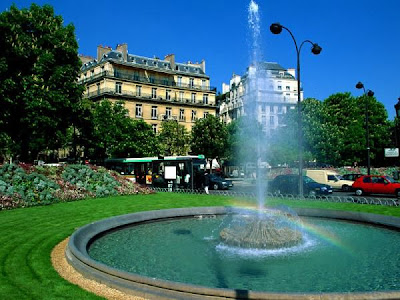
Time for another chance to show us your
world, hosted by Klaus, Sandy, Ivar, Wren, Fishing Guy and Louise.

Astoria, Oregon is one of the loveliest and oldest towns in the northwest. Located on the border between Oregon and Washington at the mouth of the Columbia River, it has a fascinating history. This post is a little longer than I like, but it is such a beautiful area with so much wonderful history and I wanted to share it with you today. The Lewis and Clark Expedition spent the winter of 1805-1806 at Fort Clatsop, a small log structure south and west of modern day Astoria. The expedition had hoped a ship would come by to take them back east, but instead endured a torturous winter of rain and cold, then returned east the way they came. Today the fort has been recreated and is now a national monument.

Fort Lewis and Clark National Park.

Click to enlarge this. It is a wood engraving of Astoria published in Harper's Weekly on May 30, 1868.
In 1810, John Jacob Astor's Pacific Fur Company sent the Astor Expedition that founded Fort Astoria as its primary fur-trading post in the Northwest, and in fact the first permanent U.S. settlement on the Pacific coast. It was an extremely important post for American exploration of the continent and was influential in establishing American claims to the land.
Washington Irving, a prominent American writer with a European reputation, was approached by John Jacob Astor to mythologize the three-year reign of his Pacific Fur Company. Astoria (1835), written while Irving was Astor's guest, cemented the importance of the region in the American psyche. In Irving's words, the fur traders were "Sinbads of the wilderness", and their venture was a staging point for the spread of American economic power into both the continental interior and into the Pacific.
The Maritime Museum

In 1876, the community was legally incorporated. It attracted a host of immigrants beginning in the late-nineteenth century:Scandinavian settlers, primarily Finns, and Chinese soon became significant parts of the population. The Finns mostly lived in Uniontown, near the present-day end of the Astoria-Megler Bridge, and took fishing jobs; the Chinese tended to do cannery work, and usually lived either downtown or in bunkhouses near the canneries. In 1883, and again in 1922, downtown Astoria was devastated by fire, partly because it was mostly wood and entirely raised off the marshy ground on pilings. Even after the first fire, the same format was used, and the second time around the flames spread quickly again, as collapsing streets took out the water system. Frantic citizens resorted to dynamite, blowing up entire buildings to stop the fire from going further.
Astoria has served as a port of entry for over a century and remains the trading center for the lower Columbia basin, although it has long since been eclipsed by Portland and Seattle as an economic hub on the coast of the Pacific Northwest. Astoria's economy centered around fishing, fish processing, and lumber. In 1945, about 30 canneries could be found along the Columbia; however, in 1974 Bumblebee Seafood moved its headquarters out of Astoria, and gradually reduced its presence until 1980 when the company closed its last Astoria cannery. The timber industry likewise declined; Astoria Plywood Mill, the city's largest employer, closed in 1989and the Burlington Northern and Santa Fe Railway discontinued service in 1996.
In 1966 the Astoria-Megler Bridge was opened; it completed U.S. Route 101 and linked Astoria with Washington State on the opposite shore of the Columbia.

The Astoria Megler Bridge.
In addition to the replicated Fort Clatsop, a popular point of interest is the Astoria Column, a tower 125 feet (38 m) high built atop the hill above the town, with an inner circular staircase allowing visitors to climb to see a breathtaking view of the town, the surrounding lands, and the mighty Columbia flowing into the Pacific. The column was built by the Astor family in 1926 to commemorate the region's early history.

Since 1998, artistically-inclined fishermen and women from Alaska and the Pacific Northwest have traveled to Astoria for the Fisher Poets Gathering, where poets and singers tell their tales to honor the fishing industry and lifestyle. Astoria is also the western terminus of the TransAmerica Trail, a bicycle touring route created by the American Cycling Association.


















































